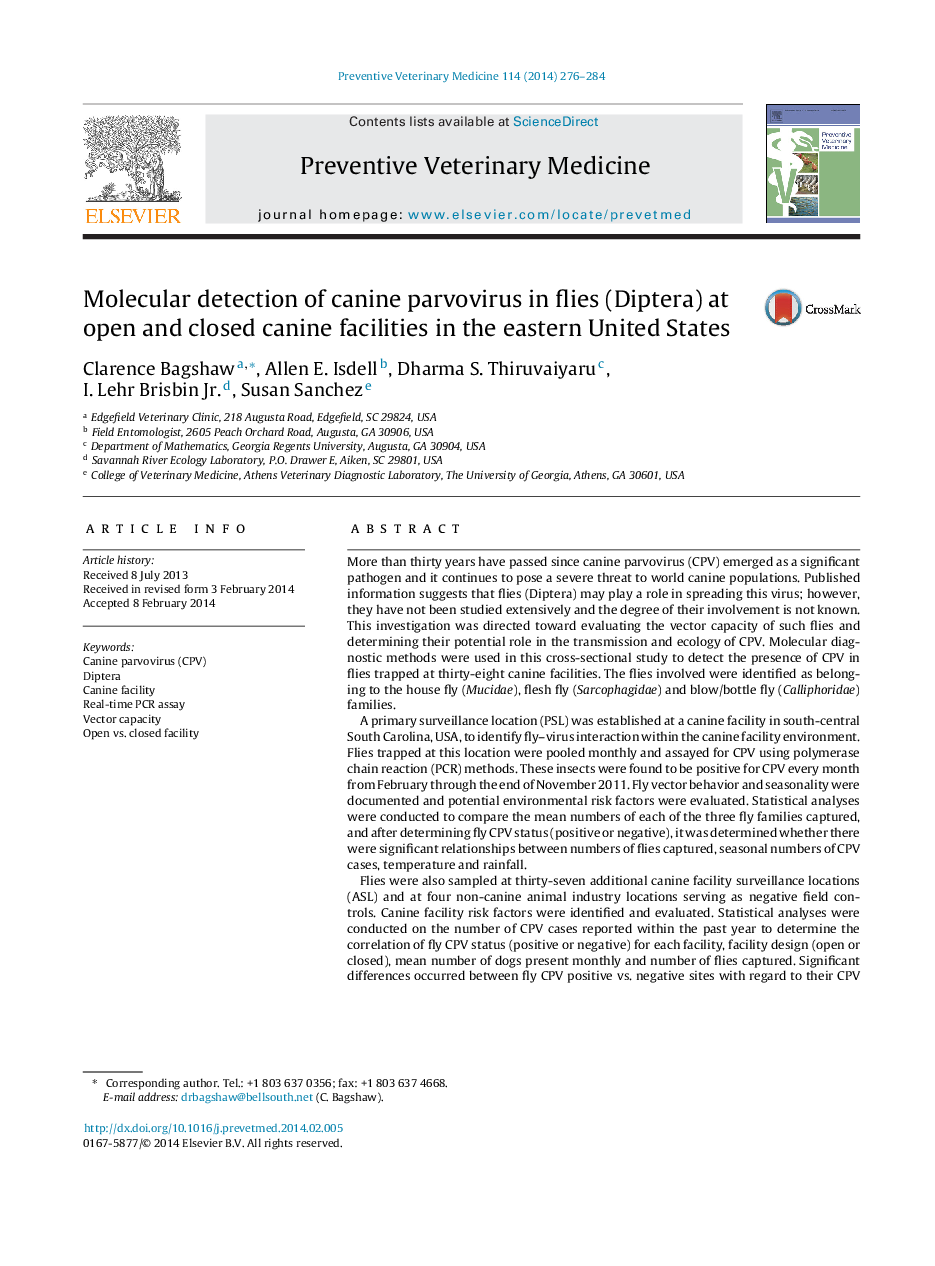| کد مقاله | کد نشریه | سال انتشار | مقاله انگلیسی | نسخه تمام متن |
|---|---|---|---|---|
| 2452449 | 1554177 | 2014 | 9 صفحه PDF | دانلود رایگان |

More than thirty years have passed since canine parvovirus (CPV) emerged as a significant pathogen and it continues to pose a severe threat to world canine populations. Published information suggests that flies (Diptera) may play a role in spreading this virus; however, they have not been studied extensively and the degree of their involvement is not known. This investigation was directed toward evaluating the vector capacity of such flies and determining their potential role in the transmission and ecology of CPV. Molecular diagnostic methods were used in this cross-sectional study to detect the presence of CPV in flies trapped at thirty-eight canine facilities. The flies involved were identified as belonging to the house fly (Mucidae), flesh fly (Sarcophagidae) and blow/bottle fly (Calliphoridae) families.A primary surveillance location (PSL) was established at a canine facility in south-central South Carolina, USA, to identify fly–virus interaction within the canine facility environment. Flies trapped at this location were pooled monthly and assayed for CPV using polymerase chain reaction (PCR) methods. These insects were found to be positive for CPV every month from February through the end of November 2011. Fly vector behavior and seasonality were documented and potential environmental risk factors were evaluated. Statistical analyses were conducted to compare the mean numbers of each of the three fly families captured, and after determining fly CPV status (positive or negative), it was determined whether there were significant relationships between numbers of flies captured, seasonal numbers of CPV cases, temperature and rainfall.Flies were also sampled at thirty-seven additional canine facility surveillance locations (ASL) and at four non-canine animal industry locations serving as negative field controls. Canine facility risk factors were identified and evaluated. Statistical analyses were conducted on the number of CPV cases reported within the past year to determine the correlation of fly CPV status (positive or negative) for each facility, facility design (open or closed), mean number of dogs present monthly and number of flies captured. Significant differences occurred between fly CPV positive vs. negative sites with regard to their CPV case numbers, fly numbers captured, and number of dogs present. At the ASL, a statistically significant relationship was found between PCR-determined fly CPV status (positive or negative) and facility design (open vs. closed). Open-facility designs were likely to have more CPV outbreaks and more likely to have flies testing positive for CPV DNA.
Journal: Preventive Veterinary Medicine - Volume 114, Issues 3–4, 1 June 2014, Pages 276–284